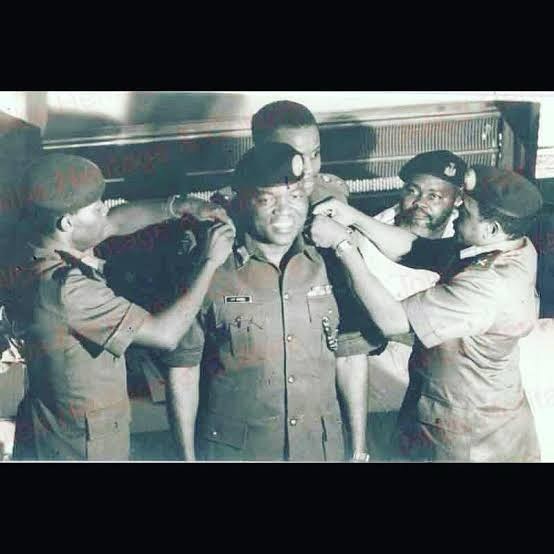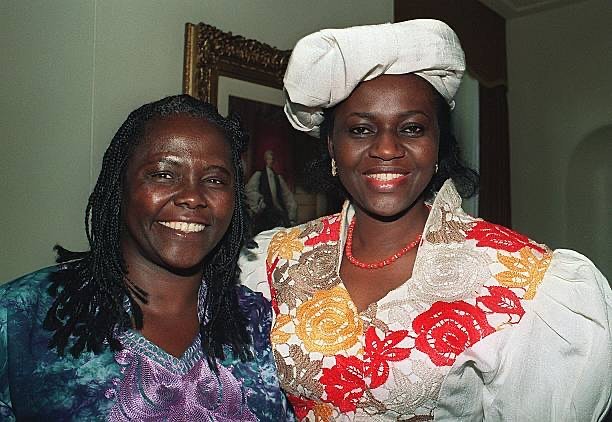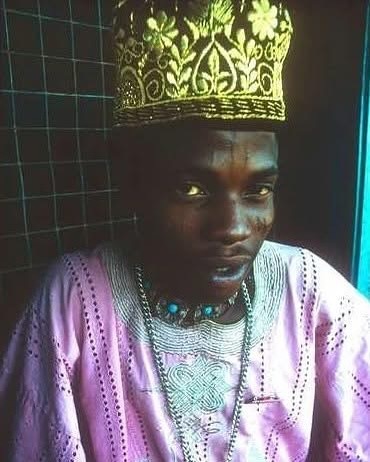It would be impossible to discuss Nigerian music and art history without addressing the renowned “Twins Seven Seven,” whose real name is Omoba Taiwo Olaniyi Oyewale-Toyeje Oyelale Osuntoki. Known for his exceptional aptitude and unusual background, he was known as “Twins Seven Seven” since he was the only surviving kid of his mother’s seven sets of twins. Twin Seven was a musician, painter, and sculptor from Nigeria. Prior to starting his artistic career, he was a traveling singer and dancer. In 1964, he attended a Mbari Mbayo workshop in Osogbo led by Ulli Beier and Georgina Beier. One of the most well-known musicians in Nigeria is Twins Seven Seven. The famous Chief Nike Davies-Okundaye, sometimes referred to as Nike Okundaye, Nike Twins Seven Seven, or Mama Nike Olaniyi, was his wife. The renowned Nike Art Gallery, which has locations in Lagos, Abuja, Kogi, and Osun, was founded by her. But in the end, their marriage ended in divorce. He was born in Nigeria as Omoba Taiwo Olaniyi Oyewale-Toyeje Oyekale Osuntoki to a Christian mother named Mary from Ogidi, Kogi State, and a Muslim father named Aitoyeje from Ibadan, Oyo State. Nigeria has the greatest twinning rate in the world, and the name he was given refers to the fact that he was the only surviving kid of seven pairs of twins born to his mother. To secure her child’s survival, a babalawo advised his mother to drink water that was considered sacred by the river goddess Osun. Twins Seven Seven was therefore thought to be a reincarnation of his great-grandfather, Osun-toki, whose name translates to “Osun is worthy of worship.” In order to guarantee his permanence in the physical world, the babalawo would make tiny cuts on his face with special medicinal herbs because he was frequently unruly to his mother as a youngster and threatened to “go away” to the spirit realm once more. Even as an adult, the etchings persisted on his face. At the age of sixteen, Twins Seven Seven was introduced to the arts through dance rather than painting. He danced on his mother’s behalf because of a Yoruba tradition that said a woman who had given birth to twins should dance around the streets for money. Although he did well academically on his exams, he hated the classroom system and developed a greater interest in art and music. He attended elementary and secondary school as well as a one-year stint at a teachers’ training college. Twins Seven Seven met Ulli Beier, a German editor and scholar who lived in Oshogbo at the time and operated an artist’s workshop with his wife Georgina Beier, when they performed at the Mbari Club.The Oshogbo school took pleasure in the fact that it offered chances to validate the many artists’ unique visions rather than instructing them. Seven Seven was provided with simple equipment and little guidance during his creative processes at the Beier workshop. Seven Seven was able to develop his own distinct painting technique as a result. Twins Seven Seven crafts a fantastical world of people, animals, plants, and Yoruba gods, drawing inspiration from traditional Yoruba mythology and culture. The segmentation, division, and repetition of his compositions visually resemble Yoruba carvings; theoretically, this influence is reflected in the work’s emphasis on change and balance, as well as its expression of dualities like the spiritual and the worldly, the past and the present, the abiku (devil child) and the orisha Osun are two examples of Yoruba cosmology and mythology that are referenced in early works like Dreams of the Abiku Child (1967). He made an effort to keep himself away from other painters who might have an impact on his own painting style. “No, I don’t want to risk being influenced by anyone else,” he said when he declined to go to a Picasso show during his first trip to the United States.…




